How to have a healthy lifestyle on a budget
Living a healthy lifestyle significantly prolongs your life. According to the National Institutes of Health, people who implement five different low-risk lifestyle factors—such as eating a healthy, balanced diet diet, getting moderate exercise, and limiting alcohol—live 14 years longer (for women) and eight years longer (for men). On top of that good news is this good news: a healthy lifestyle is attainable without blowing your entire budget. But when thinking about your budget, start by setting your health goals, because you can’t hit a target you haven’t identified. Your priorities will vary whether you’re looking for more flexibility in your life, looking to improve your cardiovascular fitness, hoping to improve your diet, or something else.
“‘Living well’ can mean different things to different people,” says Tanya Peterson, a vice president at Achieve, a digital personal finance company, “Make a list of your expectations and goals, so you can decide how best to reach them and where to spend your money.” Once you’ve identified your goals and objectives, you can implement some of our healthy living tips from doctors, nutritionists, and other wellness experts on how to save money and live better.
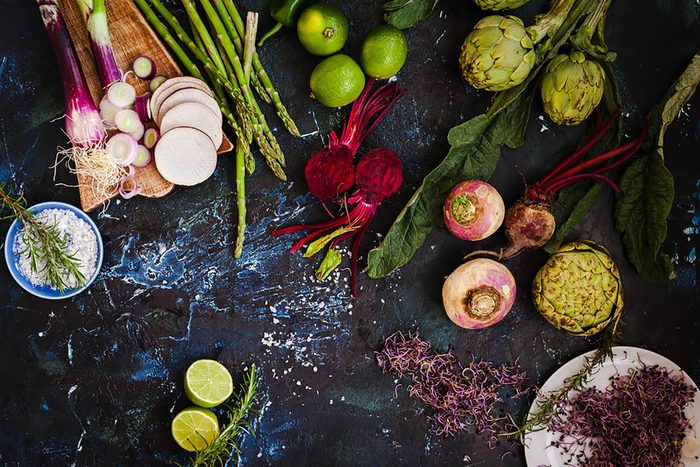
Be flexible with produce
Instead of buying what you want when you want it, embrace flexibility and buy what’s in season in your area by educating yourself on when you should be buying your favorite fruits and vegetables. “Buying what’s in season is not only cheaper, but it also tastes better and can have more nutrients,” says registered dietitian Megan Casper. Here’s another money-saving tip: “Try checking out your local farmer’s market at the end of the day, when they tend to slash prices so they don’t have to haul perishables back home.”
In addition, Imperfect Foods is a great way to get high-quality produce (and other items) that might not be beautiful or “perfect” enough to be “shelf-ready,” but that doesn’t compromise on nutritional value.
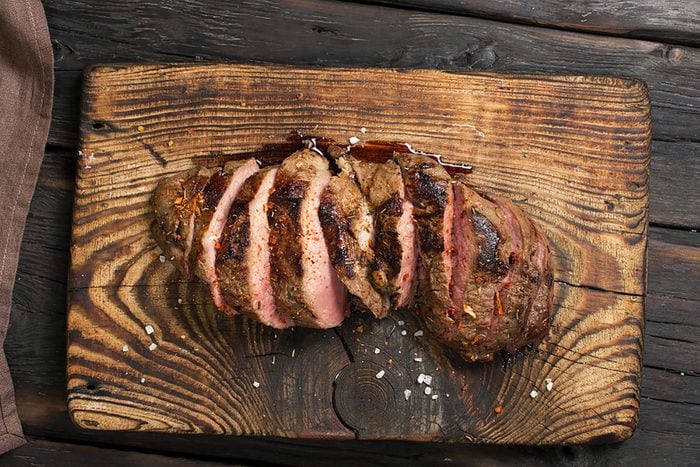
Try different cuts of meat or go meatless
When buying meat, try choosing cuts that are less pricey, like chicken thighs instead of chicken breasts, or beef chuck roast instead of sirloin. “Cheaper cuts of meat, like pork shoulder or chuck, may be a bit tougher, but they can be slow-cooked to a juicy perfection,” Casper says. Leaner cuts have more meat per dollar than ones with a layer of fat that will be cut or cooked away. Plus, they are one of the best meats to eat.
Because meat is often one of the most expensive items in a grocery cart, consider trying a meatless Monday. By including one meatless meal each week, you’re bound to save money.
Leanne Brown’s Good & Cheap cookbook is full of ideas on how to eat well on a budget—a $4 SNAP budget—and offers free resources and a huge index of budget-friendly recipes on her website.
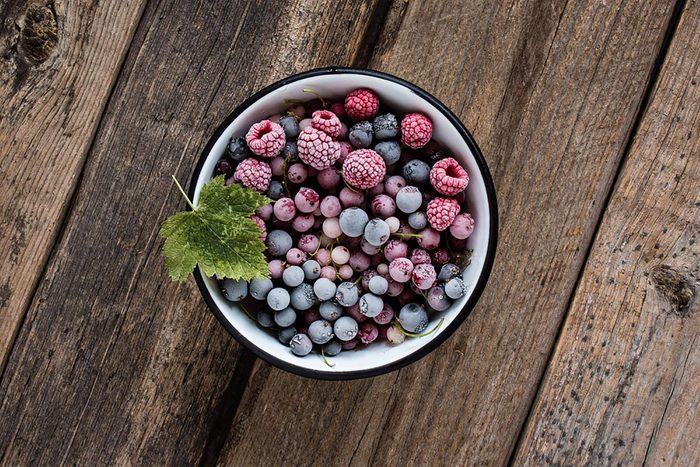
Buy frozen fruits and vegetables
If fresh produce is out of your budget, opt for frozen. “Not only do these last a while, but they are also typically cheaper than fresh produce and still provide many nutrients,” says registered dietitian Jennifer Kanikula. In fact, frozen fruits and vegetables may even be more nutritious than their fresh counterparts, as they are picked at peak ripeness and then immediately frozen, which preserves their nutrients.
We’ve been led to believe that fresh is always best, but jarred and canned foods are affordable, healthy options that are available in any season and can last a long time. “Canned produce such as corn, hearts of palm, and beets are great ways to liven up a salad or side dish,” says Gillespie. “Just rinse them with water to remove the extra salt, and you’re good to go.”
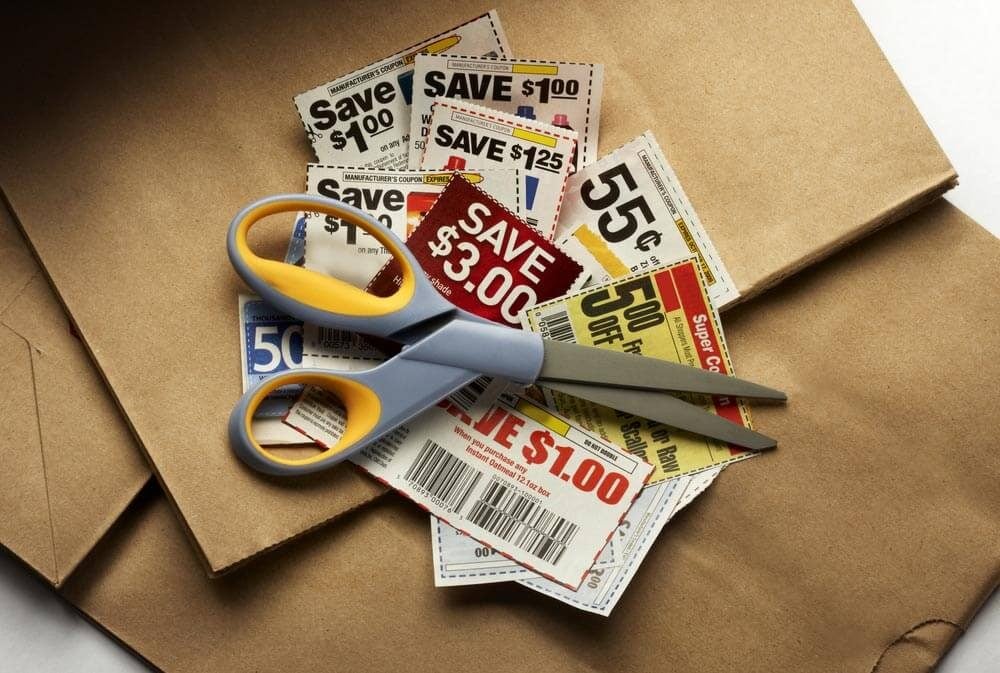
Let the sales guide you
Instead of planning meals and glancing to see if the ingredients you need are on sale, look at sales and coupons first to help you decide what to cook. “When planning your grocery list, save some room for flexible shopping in case something else is on sale instead of what you originally had planned,” says Kanikula. If you must plan in advance, check the store website or app for sales, so you can build a menu around them.

Take advantage of free trials
You don’t need to pay for an expensive membership for a good workout. Take advantage of free trials for online or at-home workout programs. This gives you a chance to try out different workouts before committing. “Many exercise facilities will offer either free or low-cost deals for new customers,” says Kanikula. “This is a great way to get exposure to the types of exercise you really enjoy and also exercise, for at least a little while, at a fraction of the cost.”

Meditate for free
For good reason, you might want to add some meditation to your life. While it’s true that all meditation is free, many of us turn to apps for guidance. After all, meditation is a great way to relieve stress and reduce the risk of depression, along with these other meditation benefits. The truth is you don’t need to pay to practice. Calm offers free guided meditations on their app, though the free version is limited.
Another option is InsightTimer, which is completely free and has more than 100K guided meditations to choose from. “My favorite part is live events, which are not only meditations but also mindfulness activities and unique healing practices,” says Juliet Dreamhunter, happiness coach and founder of Utterly Positive, “I am learning lots of interesting things from joining random online events in the app, like a sound bath or a reiki talk.”
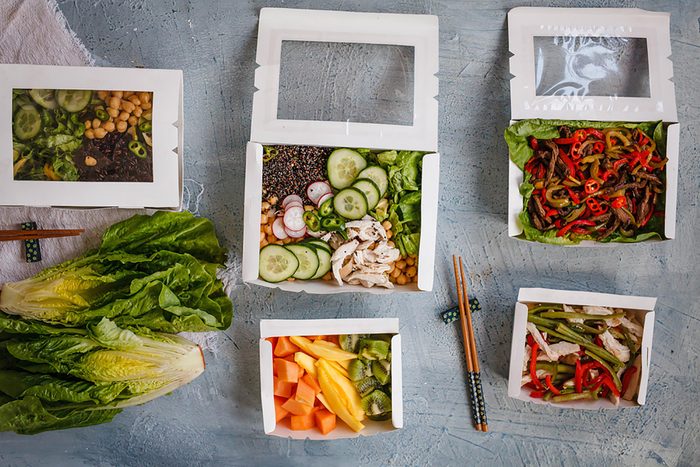
Use a meal plan delivery service instead of ordering takeout
If you have more money than time, but still want to spend less than ordering takeout, consider a meal plan delivery service to streamline healthy eating. “Offerings like Blue Apron, Hello Fresh, Sun Basket, and Purple Carrot are surprisingly affordable once you break the price down by meal,” says Battistelli. “It comes out to roughly what you would pay for takeout, without considering the savings of decision fatigue, shopping, and meal planning. And you won’t have any spoiling food in the fridge, which is a huge part of wasted grocery expense.”
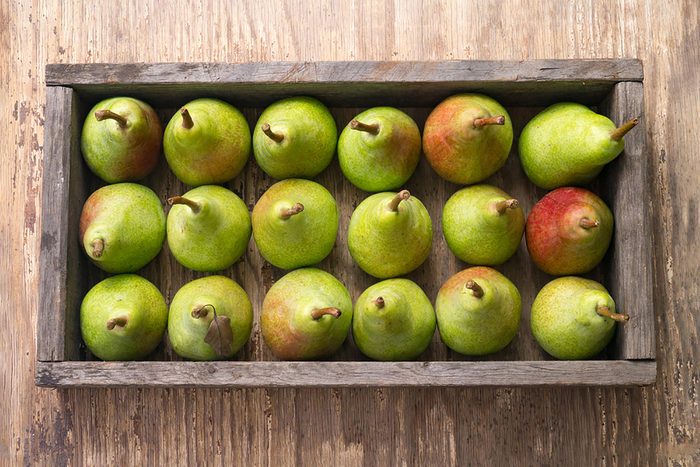
Buy favorite items in bulk
If you’re always tossing go-to grocery items, from orange juice to paper towels, in your cart, it’s time to go big. “Buy your favorite items by the case,” says nutritional chef and wellness counselor Melissa Eboli. “Many retailers will offer a 10% case discount, so if there’s a product you like and often use, here’s one way to reap financial benefits.”
While buying in bulk can help you save, Andrea Woroch, nationally-recognized consumer savings expert, warns against overdoing it. “When it comes to fresh fruit and vegetables, be cautious when buying in bulk,” Worth says, “Overing buying in bulk will lead to food waste which is much more common for fresh, health foods!”
If you do buy fresh fruits and vegetables in bulk, be sure you have freezer space in case you need to freeze some before they spoil. You can also learn to can, which is an old-fashioned—but time-tested!—way to preserve food and save money.
Make bulk buying and preserving a community thing! If you don’t have a lot of storage space or a huge family, buying 48 rolls of toilet paper at a time might be overkill, but splitting it with a friend or two makes good sense! You can also fan tomatoes for winter sauce making while your neighbor cans the peaches, and you can swap jars to spread the wealth.
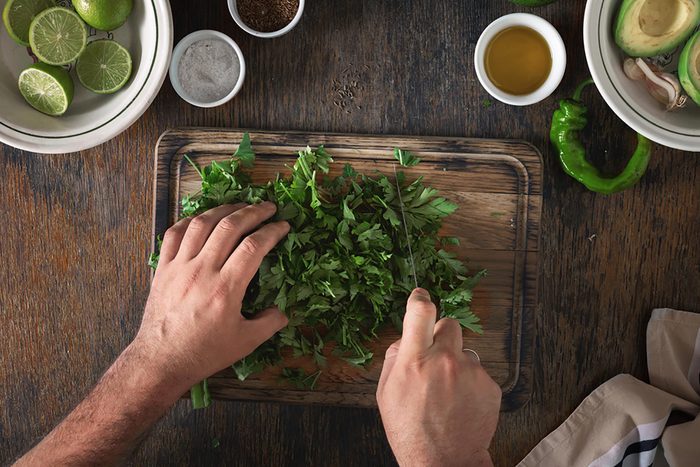
Do meal prep on weekends
Use your free time on weekends to set yourself up for home-cooked weeknight meals. That means washing and chopping vegetables, stewing meat, and preparing sauces or even entire meals. “It saves money and a lot of time on weekdays,” says wellness expert Aihui Ong. Advance meal prep prevents the need for pricey, fattening takeout, and also keeps you from preparing less healthful meals, like mac ‘n cheese, simply because they’re easy.
Shannon Cairns from Making Frugal Fun suggests planning out a month (or even a year) of healthy dinner ideas in advance. “One of the biggest issues people have with eating at home every night to save money is that they don’t plan ahead,” Cairns says, “When they can’t think of anything to cook that night, they give up and get takeout!”
“Planning out an entire year of meals in advance has allowed our family to eat at home more often,” Cairns says, “We were able to cut our monthly food budget from over $1500 to around $400-$500 for our family of five.”

Skip Alcohol
Amanda Kuda is an alcohol-free life coach, and her #1 tip for living well is to cut out alcohol. “Alcohol is a toxin with massive health consequences that outweigh any perceived benefit,” Kuda says, “And if you’re hoping to lose weight, heal from chronic illness, sleep better, increase your energy or save money, alcohol is not your friend.”
Alcohol does a number on your liver, not to mention your bank account. If you do eat out, even one or two drinks per person can double your bill. Even one bottle of reasonably priced grocery-store wine shared at home can add hundreds to your monthly budget. Instead, skip it altogether or save it for special occasions.
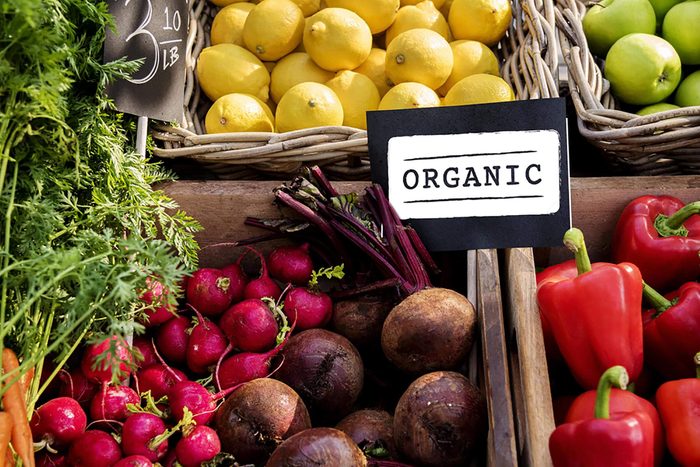
Know when to skip organic
Organic food, though worthwhile, is more expensive. Luckily, it’s not always necessary. Look to the Environmental Working Group (EWG) for their “Dirty Dozen” (pesticide-covered foods you should always buy organic) and “Clean 15” foods (foods that are OK to buy conventional) to help you know when to splurge or save. “They even have an app you can download to your smartphone to make it convenient for you when you’re shopping,” says integrative medicine physician Bindiya Gandhi, MD.

Work out at home
Take advantage of different fitness apps and free YouTube videos at home, says Dr. Gandhi. “There are numerous free YouTube subscriptions like Fitness Blender, Fightmaster Yoga, Yoga with Adriene, and more that you can do in the convenience of your own home.
Find out if your job or school has a no-cost fitness center or a fitness reimbursement plan,and if so, take full advantage. “Carefully read through the benefits you are offered through Human Resources,” says Nina Watson, a fitness expert and nationally recognized diagnostic radiologist. “Many companies offer discounted rates for memberships at certain gyms. Some companies even offer rewards or incentives for participating.”
Also, you might not even need an app or membership. “Try using your feet before doing anything else,” Peterson says, “Nearly everyone has access to an excellent fitness tool: their own feet. Simply walking or running in your neighborhood, or in nearby parks or on trails, can put you in far better shape, for the cost of nothing more than a good pair of shoes.”
You can double down on your savings by walking or biking instead of driving, or use public transportation or carpooling to save on gas money. You’ll also get some steps in walking to the bus, train, or carpool meeting spot. You’ll get a workout, save money, and get where you need to go.
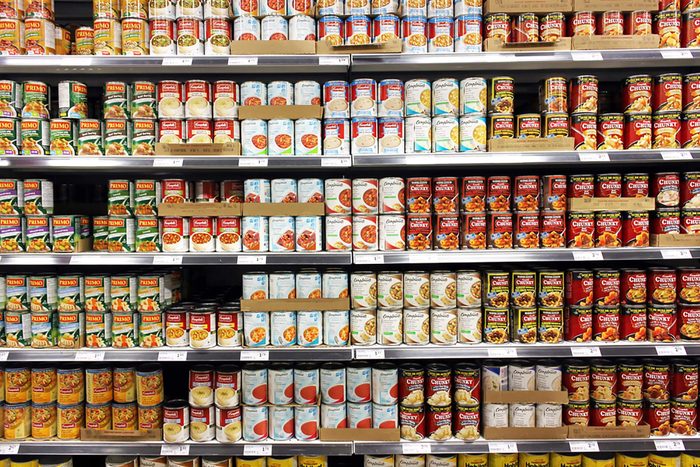
Buy store brands
It’s tempting to buy name brands you’ve seen in ads, but you pay for that prestige. Store brands—many of which are nearly identical to the name-brand versions—are a good way to use healthy foods swaps to save money on groceries.“Most large food stores, even Whole Foods, now produce their own brands at a more affordable price than the name-brand options,” says health coach Beth Romanski. “For example, the store-brand coconut milk at my local grocery store is $1.99 versus $3.99 for a name-brand version. It may not seem like much, but every little bit adds up.”
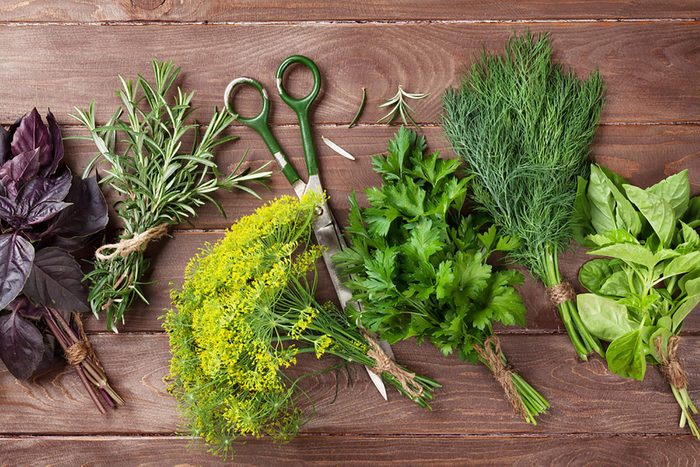
Grow your own
Eating is practically free if you can grow food in your own backyard. “If you’re new to gardening or don’t think you have a green thumb, start off with a few simple herbs,” says health and wellness expert Caleb Backe. “Herbs are generally pretty resilient and taste way better when they’re freshly picked. Once you get the hang of it, plant some of your favorite foods like tomatoes, eggplants, zucchini, peppers, and berries.”
If you grow more than you need—or you only grew a few things and want more variety—connect with your neighbors either in person or on sites like BuyNothing.com to share the bounty.

Look for budget-friendly options to your favorites
Matt Claes is the head coach and founder of Weight Loss Made Practical, and he suggests choosing the more budget-friendly versions of the nutrients you are looking for. “I follow a relatively low-carb diet, which means I get a lot of my calories (and vitamins and minerals) from nuts,” Claes says, “However, in Belgium, where I live, peanuts (which are actually legumes but close to nuts in terms of nutrients) and walnuts tend to be the most budget-friendly types of nuts.”
By mainly choosing and consuming these, Claes gets the nutrients he wants while saving a bit of money. This same concept applies to many vegetables, fruits, and other food categories. Don’t be set on one shape of pasta, for example, and buy whichever is on sale.

Use apps to get the best prices and cash-back
There are a lot of ways to earn cash back on basics like gas and groceries. Using gas apps—especially with gas prices so high—is a great way to find the best prices and get cash back.
ShopSavvy Coupons.com, and PriceGrabber allow you to access and redeem digital coupons to save money on groceries and other items. These apps will help you find the best prices on products and can even alert you when prices drop on items you have on your wish list.
Dosh, Rakuten, and Ibotta offer cash back on purchases at participating stores and also include a variety of discounts and coupons. Honey is a magical app that automatically searches for and applies the best available coupons and promo codes at checkout to help you save money on online purchases.
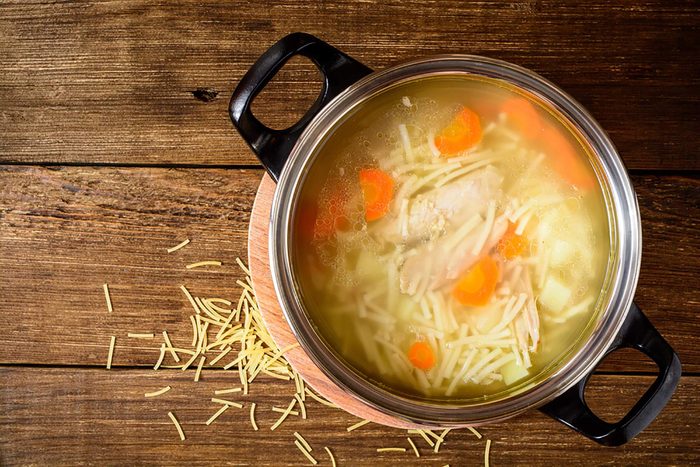
Give new life to leftovers
If you have leftover food that you’re sick of eating and don’t want to waste, switch it up, and turn it into a soup. “Some canned or frozen broth is your best friend here,” says nutritionist Keith Ayoob, associate clinical professor at the Albert Einstein College of Medicine in New York City. “Or make your own. It takes some time, but it’s passive time, so you just let it simmer in the evening while you watch TV or do something else.”

Make DIY cleansers
Instead of buying heavy-duty cleaning products that likely contain hazardous chemicals or splurging on special green brands, make your own natural cleaning solutions using ingredients like baking soda, vinegar, and lemon juice. “Try making your own non-toxic cleaners with products you already have in your kitchen,” says healthy lifestyle expert Mary Black. “One of the easiest ways to be healthy is to rid your house of those nasty poisons.”
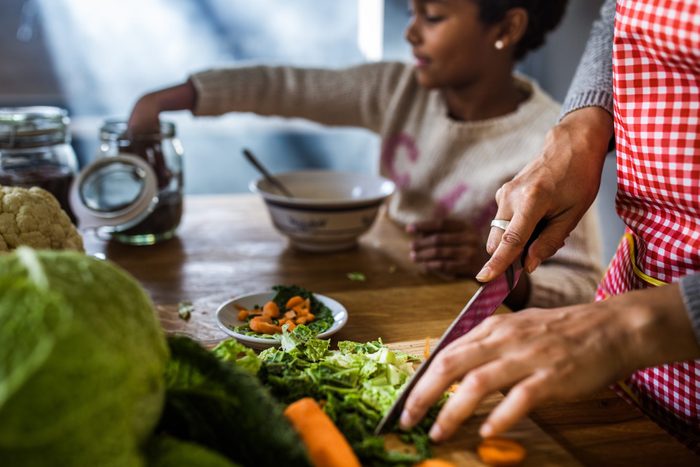
Do it yourself
Buying pre-cleaned and pre-cut food can save time, but it won’t save you money. Purchasing a head of lettuce, cleaning it, and chopping it oneself is more cost-effective than purchasing a bagged salad, and it will frequently remain fresher for a longer period of time. The same for carrots, celery, etc.
However, keep in mind that if buying pre-peeled garlic is the difference in you making a home-cooked meal or ordering takeout because you didn’t have time or plan ahead, buy the pre-peeled garlic.
One way to save money is to buy big blocks of cheese (Costco and other warehouse stores are great for this) to slice and grate yourself.

Order online
It makes good financial sense to shop around for the best prices, and in today’s world, certain products are just cheaper online. “Amazon or Thrive Market are great places to find some healthy staples at a better price due to the merchants’ ability to source vendors,” says Romanski.
You can also order subscriptions for favorite items that you use regularly for additional savings.

Pass up packaged goods
Ready-made packaged foods are tempting because of their convenience, but they can also hike up the cost of your grocery bill. “For example, you could make kale or beet chips, crackers, riced cauliflower, or even kombucha on your own—even if you aren’t someone who particularly likes cooking—at a fraction of the price of the trendy packaging,” says Romanski.

Connect with nature
Nature requires no down payment and no monthly membership, so go ahead and take advantage. Connecting with nature might simply look like taking a walk around the block or sitting on your stoop for a few minutes. “Go for a walk during your lunch break, do yoga outside or in the garden, and plan jogging and hiking adventures on the weekends,” says self-care coach Zakiyya Rosebelle. Doing outdoor activities is not only a free or inexpensive way to get exercise, but spending time outdoors can help improve your overall well being and mood.
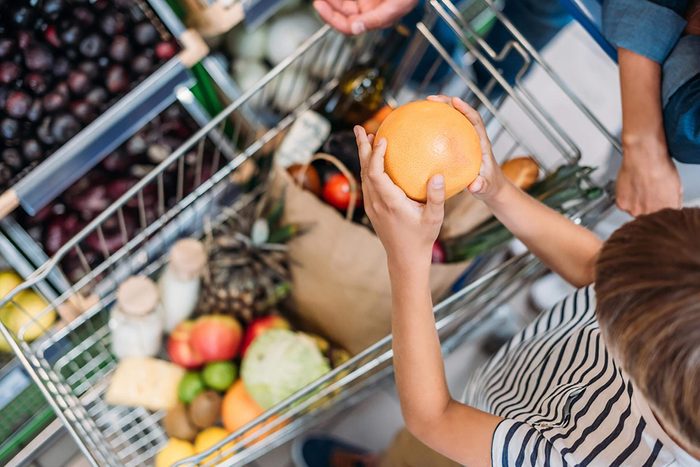
Eat before you shop
It’s true that shopping on an empty stomach can lead to an empty wallet. “You’ll be far more tempted to buy random, expensive foods that catch your fancy if you’re hungry,” says health and fitness blogger Alice Williams. “Write your grocery needs on a piece of paper or in the notes section of your phone, and try not to stray from that list.”
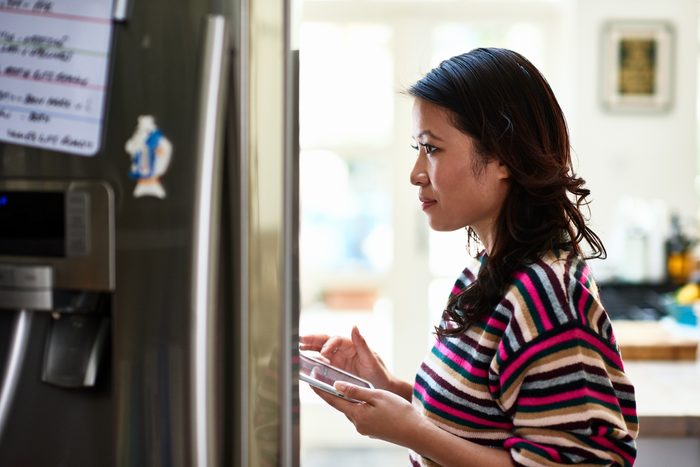
Inventory what you already have!
Be sure to check the contents of the refrigerator and the cabinets as well to see what you already have. It’s possible that there are edible items stashed away in the back that can be used, or you could want to organize your meals around edible items that need to be consumed before they go bad. You should only make plans to buy things that you are certain you will make use of. You won’t have to waste as much of the things you buy but don’t end up using them if you do it this way.

Practice gratitude
Practicing gratitude can take on many different forms, but regardless of how you do it, it’s a great way to appreciate what you already have.
Gloria Grace Rand is a spiritual alignment coach, podcast host, and the author of the best-selling book, Live. Love. Engage. – How to Stop Doubting Yourself and Start Being Yourself. “Spending a few minutes every morning journaling your thoughts, even if all you write are your plans for the day, helps to get your creative juices flowing and improves your intuition,” Rand says, “Akeeping a gratitude journal is also great for your health! Every night, spend a few minutes journaling about the things and people in your life that make you smile and feel gratitude. The more gratitude you express, the more you have to be grateful for. “
- 12 Best Tips for Eating Plant-Based on a Budget
- 11 Smart Ways to Eat Healthy on a Super Tight Budget
- Why Buying Eye Cream Is a Waste of Money, According to a Dermatologist
Additional reporting and writing by Carina Wolff
